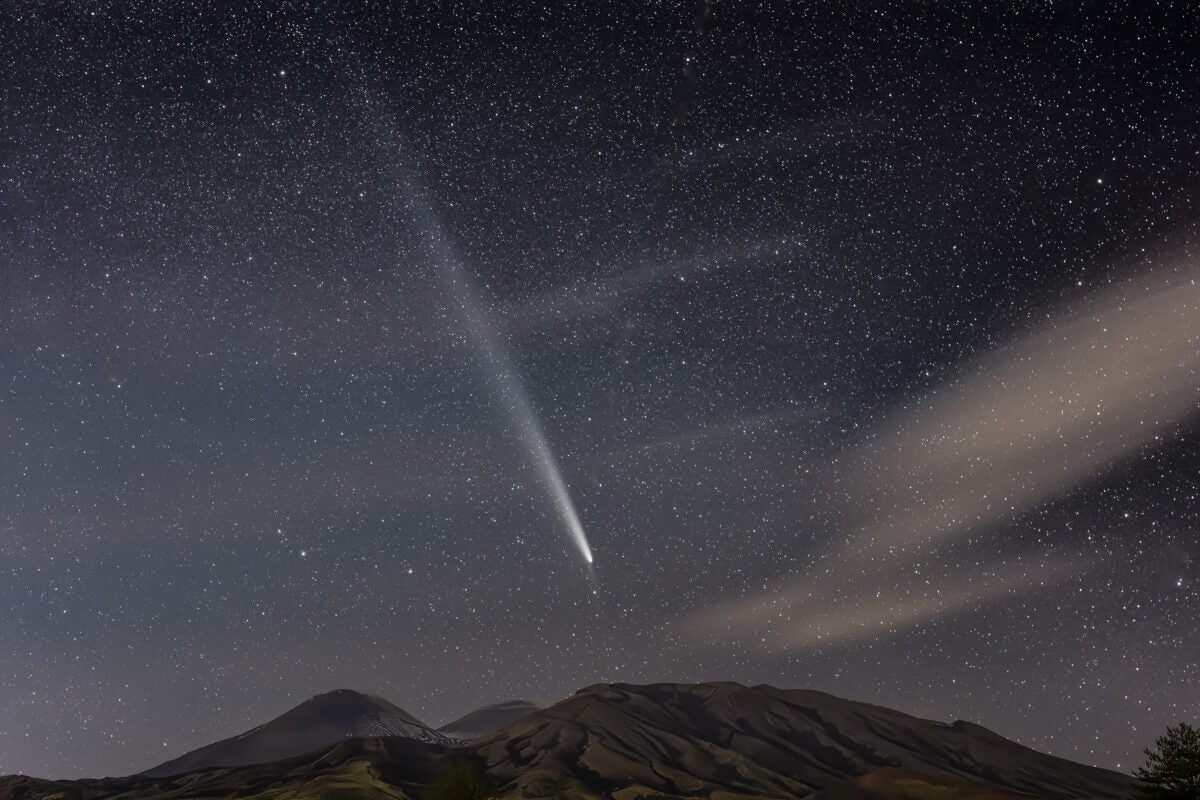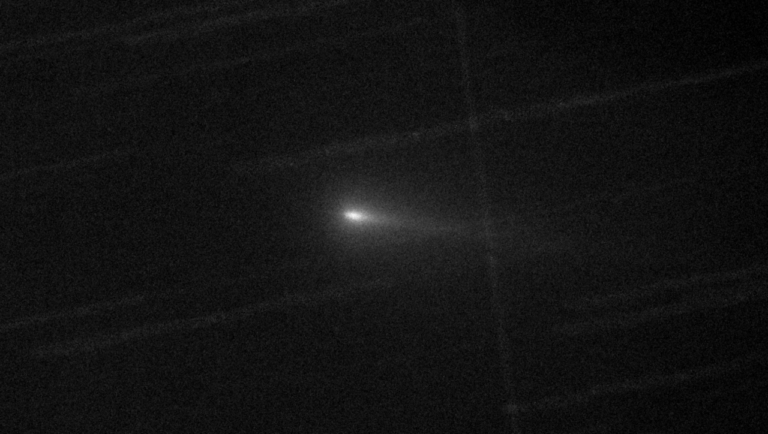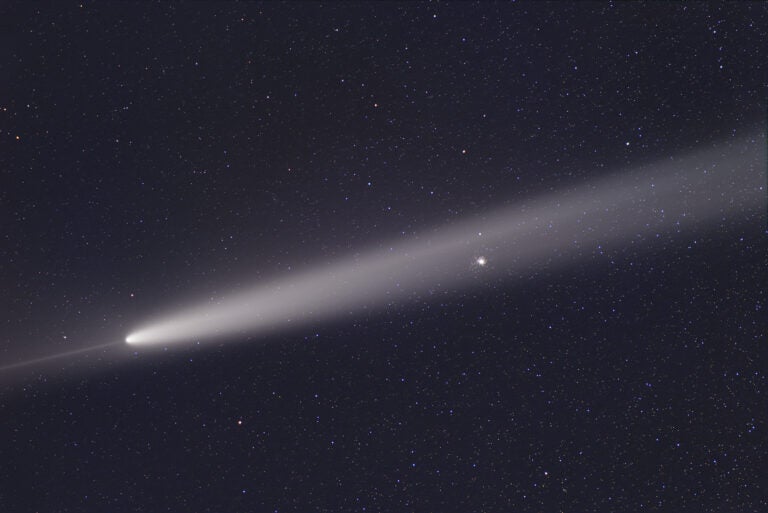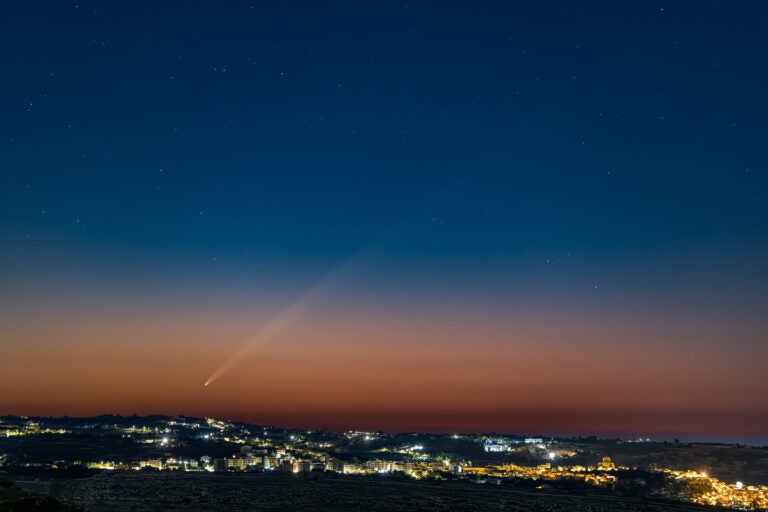
Comet C/2023 A3 — better known as Tsuchinshan-ATLAS — is fading in brightness as it speeds away from the Sun and Earth in the evening sky. It’s still visible to the naked eye in a dark sky, and it’s certainly an easy target for binoculars. But now’s your last chance to see it — so get out there and take advantage of it while you can.
Here’s where the comet will be 45 minutes past sunset on the following dates. Although the numbers here are specific for Tucson, Arizona, they should be accurate enough to help you spot the comet, whatever your location.
| October date | Comet altitude | Comet azimuth |
| 21 | 35° | 248° |
| 22 | 37° | 247° |
| 23 | 38° | 245° |
| 24 | 39° | 245° |
| 25 | 40° | 244° |
| 26 | 41° | 243° |
Azimuth tells us where the comet is with relation to the cardinal directions (north, south, east, west). An azimuth of 0° is north, and 270° is due west. So, for example, if you’re searching for the comet 45 minutes after sunset on the 22nd, look 23° south of west and 37° above the horizon.
If you make a fist and hold it at arm’s length, its distance from top to bottom measures approximately 10°. So, on the 25th at 45 minutes past sunset, the comet will be just a bit higher than four of your fists, stacked on top of one other, if you place the bottom of one of them along the western horizon.
Good luck, and send your photos to readergallery@astronomy.com — we’ll feature the best ones on the website and perhaps in the magazine.




